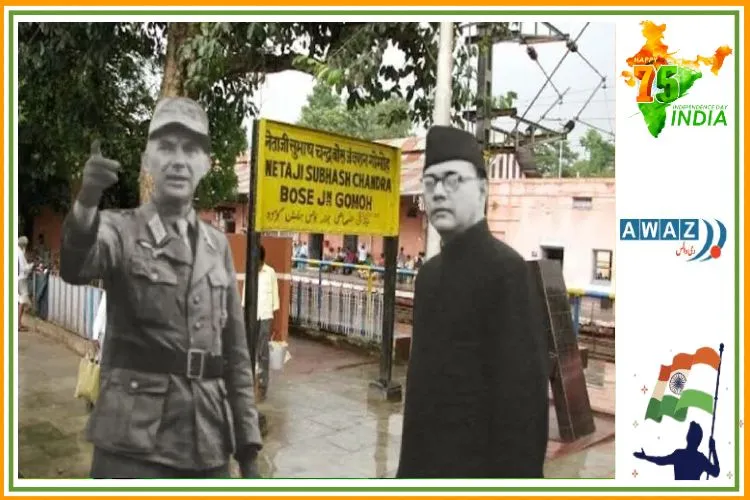
New Delhi
To preserve and keep alive the memories of 'The Great Escape' of Netaji from Kolkatta, a life-size bronze statue of the revolutionary was unveiled at the Netaji Subhash Chandra Bose Junction of Gomoh in Jharkhand. The story of his 'Great Escape' from the clutches of the British authorities is also briefly written on a plaque at this junction.
Turning the pages of the history of the freedom movement, one looks at Gomoh, a small town in Dhanbad that has an important connection with the legendary freedom fighter Netaji Subhash Chandra Bose. When Netaji left Kolkata to fulfill his mission of launching an armed struggle for freedom and the formation of the Independent Indian Army, he spent his last night in India in the city of Gomoh.
From Gomoh railway station, Netaji took the Kalka Mail Express and left for Peshawar. The station has since been renamed after the legend.
It was on January 18, 1941, that Netaji, who had been detained by the British government at his residence on Elgin Road, Kolkata, escaped. Despite the heavy guard of the British government, his departure from Calcutta was planned by Satya Ranjan Bakshi, a Bengali volunteer, involved in an underground revolutionary group against British rule in India.
After leaving his residence in Calcutta, Netaji along with his nephew Shashir Bose reached Gomoh at 8 pm in his 'Baby Austin' car (BLA 7169). He reached the house of his lawyer friend Sheikh Muhammad Abdullah who lived in Loko Bazar, Jharkhand. He had shared his plan to go to Peshawar with Sheikh Abdullah. It was decided that Netaji would disguise himself as a 'Pathan' and board the Howrah-Peshawar mile 63 train from the station.
On Sheikh Abdullah's request, Tailor Amin of Gomoh had hurriedly stitched a Pathan dress for Netaji. Amin took Netaji to the station at 1 o'clock where he finally boarded the train from platform number three.
Later this train came to be known as Kalka Express. In 2021 and has since been renamed by the Indian Railways as Netaji Express.
This incident of Subhash Chandra Bose leaving the country is written in the history books as 'The Great Escape'.
On 2 July 1940, Netaji was arrested under Section 129 of the Indian Defense Act for the Halliwell Movement by the then Deputy Commissioner John Brain. He was lodged in the Presidency Jail.
In jail, Netaji went on a hunger strike leading to health complications. He was released on 5 December 1940 on the condition that he would be re-arrested after he recovered.
The hearing of his case was scheduled for 27 January 1941 and he had escaped Kolkata a day ago.
After reaching Gomoh, Netaji, and Shashir Bose hid in the forests of Gomoh Hattiatad. In this forest, he had a secret meeting with freedom fighter Alijan and advocate Chiranjeev Babu. Later in the evening, Netaji went to meet Sheikh Abdullah at Gomoh's Loco Market.
When Netaji went from Gomoh to Kalka Mail, the British could never arrest him again.
Also Read: Glorious Role of Muslims in Indian Freedom Struggle
It may be recalled that in 2009, the Ministry of Railways renamed Gomoh Station Netaji Subhash Chandra Bose Gomoh Junction. On 23 January 2009, the then Union Railway Minister Lalu Prasad inaugurated Netaji's memorial.
